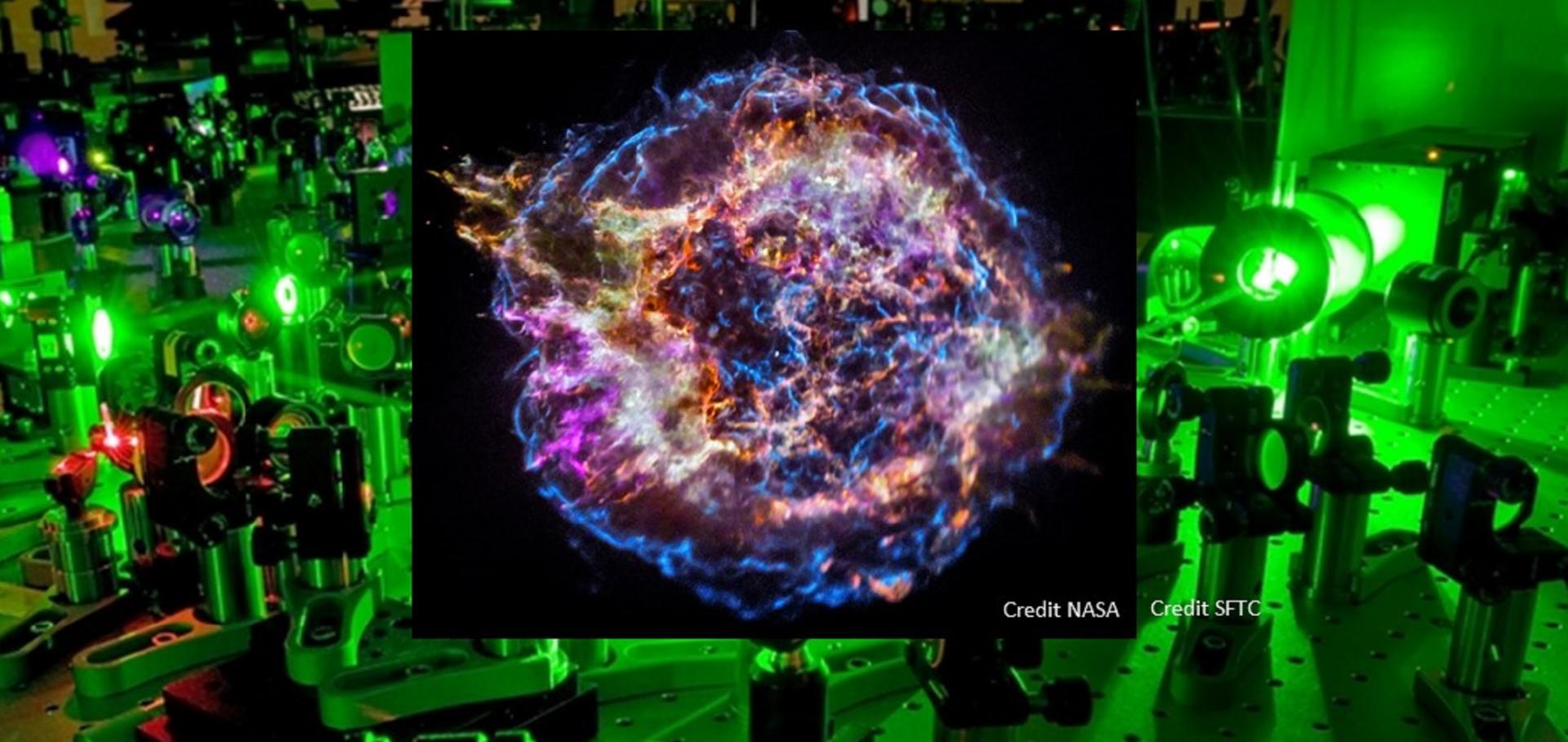Evidence that the maximum electron energy in hotspots of FR II galaxies is not determined by synchrotron cooling
Monthly Notices of the Royal Astronomical Society Oxford University Press (2016)
Abstract:
It has been suggested that relativistic shocks in extragalactic sources may accelerate the highest energy cosmic rays. The maximum energy to which cosmic rays can be accelerated depends on the structure of magnetic turbulence near the shock but recent theoretical advances indicate that relativistic shocks are probably unable to accelerate particles to energies much larger than a PeV. We study the hotspots of powerful radiogalaxies, where electrons accelerated at the termination shock emit synchrotron radiation. The turnover of the synchrotron spectrum is typically observed between infrared and optical frequencies, indicating that the maximum energy of non-thermal electrons accelerated at the shock is ≲ TeV for a canonical magnetic field of ~100 μG. Based on theoretical considerations we show that this maximum energy cannot be constrained by synchrotron losses as usually assumed, unless the jet density is unreasonably large and most of the jet upstream energy goes to non-thermal particles. We test this result by considering a sample of hotspots observed with high spatial resolution at radio, infrared and optical wavelengths.Contemporary particle-in-cell approach to laser-plasma modelling
Plasma Physics and Controlled Fusion IOP Publishing 57:11 (2015) 113001
Developed turbulence and nonlinear amplification of magnetic fields in laboratory and astrophysical plasmas.
Proceedings of the National Academy of Sciences of the United States of America National Academy of Sciences 112:27 (2015) 8211-8215
Abstract:
The visible matter in the universe is turbulent and magnetized. Turbulence in galaxy clusters is produced by mergers and by jets of the central galaxies and believed responsible for the amplification of magnetic fields. We report on experiments looking at the collision of two laser-produced plasma clouds, mimicking, in the laboratory, a cluster merger event. By measuring the spectrum of the density fluctuations, we infer developed, Kolmogorov-like turbulence. From spectral line broadening, we estimate a level of turbulence consistent with turbulent heating balancing radiative cooling, as it likely does in galaxy clusters. We show that the magnetic field is amplified by turbulent motions, reaching a nonlinear regime that is a precursor to turbulent dynamo. Thus, our experiment provides a promising platform for understanding the structure of turbulence and the amplification of magnetic fields in the universe.Particle acceleration and magnetic field amplification in the jets of 4C74.26
Astrophysical Journal American Astronomical Society 806:2 (2015) ARTN 243
Abstract:
We model the multi-wavelength emission in the southern hotspot of the radio quasar 4C74.26. The synchrotron radio emission is resolved near the shock with the MERLIN radio-interferometer, and the rapid decay of this emission behind the shock is interpreted as the decay of the amplified downstream magnetic field as expected for small scale turbulence. Electrons are accelerated to only 0.3 TeV, consistent with a diffusion coefficient many orders of magnitude greater than in the Bohm regime. If the same diffusion coefficient applies to the protons, their maximum energy is only ~100 TeV.Particle acceleration and magnetic field amplification in hotspots of FR II galaxies: The case study 4C74.26
Astrophysical Journal University of Chicago Press (2015)


